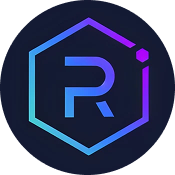Navigating the complex waters of decentralized finance requires understanding the distinct roles and functionalities of platforms like Yearn Finance and Serum. While Yearn acts as a yield optimizer aggregating multiple protocols to maximize returns, Serum serves as a high-speed, on-chain order book facilitating decentralized trading on Solana. This comparison aims to unpack their core architectures, features, and ideal user bases, providing crypto enthusiasts with a comprehensive perspective to inform their investment and development decisions.
Short on time? Jump to Yearn Finance vs Serum Comparison
Understanding Yearn Finance and Serum ?
Yearn.Finance, launched in 2020 by Andre Cronje, is a decentralized platform built on Ethereum that automates yield farming by aggregating various DeFi protocols. Its core function is to optimize returns for users through profit switching across pools like Aave, Curve, and Compound, utilizing vault strategies that rebalance dynamically. Yearn's native governance token, YFI, empowers community-driven decision-making, fostering decentralization and continuous innovation within its ecosystem.
Serum, on the other hand, is a decentralized exchange (DEX) built on Solana, designed to deliver high-speed, low-cost trading through its fully on-chain central limit order book (CLOB). Unlike typical AMM-based DEXs, Serum emulates traditional trading venues with features like limit orders and order matching, providing traders with a familiar experience in a decentralized environment. Its architecture leverages Solana’s high throughput to handle thousands of transactions per second, positioning Serum as a backbone of Solana’s DeFi ecosystem.
Both platforms exemplify the diversity within DeFi—Yearn streamlining yield optimization through automation and protocol aggregation, and Serum revolutionizing decentralized trading with its high-performance, order book model. While their underlying blockchain technologies differ—Ethereum versus Solana—their shared goal is to enhance accessibility, transparency, and efficiency in decentralized finance.
Understanding the nuances of their design and functionality provides valuable insight into how DeFi continues to evolve, catering to different user needs—from passive yield farmers to active traders—each platform offering unique tools and opportunities within the decentralized space.
Key Differences Between Yearn Finance and Serum
Core Functionality
- Yearn Finance: Yearn Finance functions primarily as a yield aggregator, automatically directing user funds into the most profitable DeFi protocols through vault strategies. Its focus is on maximizing returns by smartly reallocating assets across various lending, borrowing, and liquidity pools. The platform emphasizes automation and risk management, providing users with a hands-off approach to yield farming and liquidity provision.
- Serum: Serum operates as a decentralized exchange (DEX) based on Solana’s high-performance blockchain, facilitating seamless, low-cost trading. Its hallmark is the fully on-chain central limit order book (CLOB), which allows users to place limit and market orders similar to traditional exchanges. Serum’s core strength lies in providing a decentralized, transparent, and high-speed trading environment, supporting a broad ecosystem of DeFi applications.
Underlying Blockchain
- Yearn Finance: Yearn is built on Ethereum, leveraging its extensive DeFi ecosystem, smart contract capabilities, and widespread adoption. The Ethereum network provides the foundation for Yearn’s vaults, governance, and integrations, though it faces challenges like network congestion and high transaction fees, especially during peak periods.
- Serum: Serum is constructed on Solana, a blockchain known for its high throughput and low latency. Solana’s architecture enables Serum to process thousands of transactions per second with sub-second finality, making it ideal for high-frequency trading and large-volume DeFi operations. The choice of Solana helps Serum maintain its performance edge but also ties its reliability to Solana’s network stability.
User Interaction
- Yearn Finance: Yearn users typically interact via depositing assets into vaults through compatible wallets like MetaMask or Ledger. The platform automates yield farming, requiring minimal ongoing management once funds are deposited. Governance participation is active but usually limited to YFI token holders proposing and voting on protocol upgrades.
- Serum: Serum users engage by placing limit or market orders directly on the on-chain order book. The interface mimics traditional trading platforms, appealing to active traders. Market makers and liquidity providers contribute to the order book, earning trading fees, while developers build on Serum to create a variety of DeFi products.
Security and Decentralization
- Yearn Finance: Yearn prioritizes security through modular architecture and community governance, but it has faced notable exploits, such as the $11 million DAI lending pool breach in 2021. Its decentralization is driven by YFI holders who influence protocol changes and strategy approval, fostering community engagement.
- Serum: Serum’s security depends on Solana’s blockchain integrity and smart contract audits. Its fully on-chain order book offers transparency and trustlessness, but the platform’s reliance on Solana means that network outages or bugs could impact operations. Serum’s decentralized architecture ensures users retain control over their funds at all times.
Intended User Base
- Yearn Finance: Yearn is ideal for passive investors seeking automated yield maximization without needing to monitor markets constantly. It attracts those interested in governance and community-driven DeFi development, especially yield farmers, liquidity providers, and long-term holders.
- Serum: Serum targets active traders, market makers, and developers who desire a high-speed, low-cost decentralized trading environment. Its on-chain order book appeals to users familiar with traditional exchanges, as well as DeFi projects integrating trading functionalities.
Yearn Finance vs Serum Comparison
| Feature | ✅ Yearn Finance | ✅ Serum |
|---|---|---|
| Blockchain Platform | Ethereum | Solana |
| Primary Function | Yield optimization and aggregation | Decentralized high-speed trading |
| User Interaction | Automated vault strategies, governance voting | Order placement via on-chain order book |
| Transaction Speed | Dependent on Ethereum network (can be slow/expensive) | Thousands of transactions/sec with sub-second finality |
| Cost Efficiency | Higher gas fees during congestion | Low fees due to Solana’s architecture |
| Security Model | Modular smart contracts, community governance | On-chain order book with Solana’s security guarantees |
Ideal For
Choose Yearn Finance: Passive investors and yield farmers seeking automated returns and community governance.
Choose Serum: Active traders and DeFi developers requiring high-speed, decentralized order execution.
Conclusion: Yearn Finance vs Serum
Yearn Finance and Serum exemplify the bifurcation within DeFi—one focusing on automated yield optimization across multiple protocols, the other on high-performance, decentralized trading. Yearn’s modular vault system and community governance make it a powerhouse for passive income seekers, while Serum’s on-chain order book and speed cater to active traders and liquidity providers within the Solana ecosystem.
Choosing between them depends on user intent: if your goal is to maximize yields with minimal oversight, Yearn offers a comprehensive solution. Conversely, if you prioritize fast, cost-effective trading or building DeFi applications that leverage order book dynamics, Serum is the platform of choice. Both platforms continue to evolve, pushing the boundaries of what decentralized finance can achieve, each serving complementary needs within the decentralized landscape.






